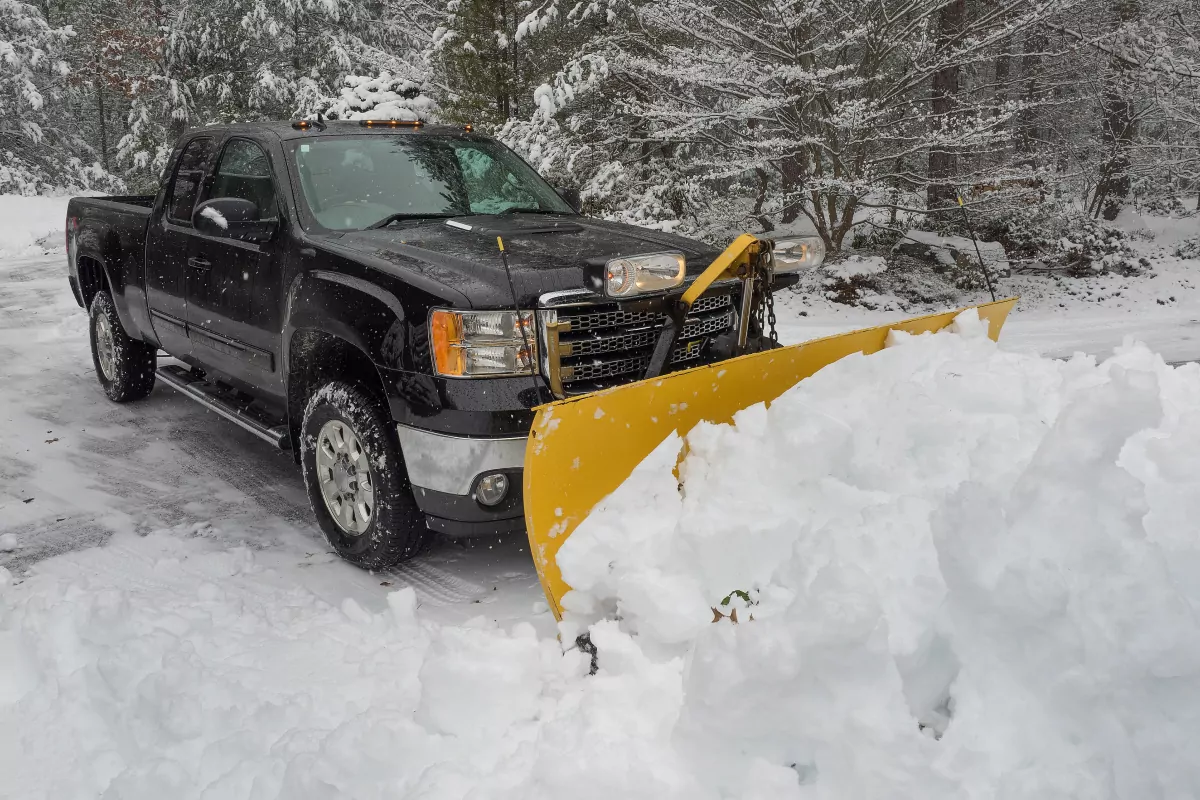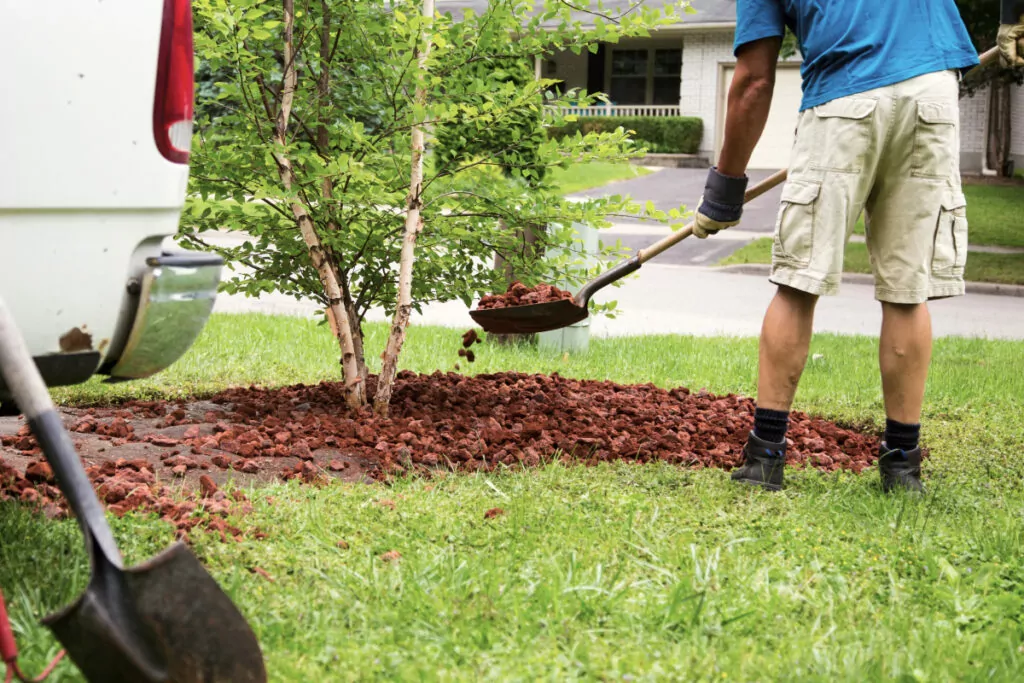So, you’ve added Snow Removal to your profile and purchased all the necessary gear to build your plowing business on Taskrabbit. Awesome! But what comes next?
Performing the actual plowing task requires a bit of knowledge, so we’ve gathered some great tips and tricks top Taskers use to help you excel during each and every task.
Scoping Your Task
According to Brian’s Lawn Maintenance, there’s more to plowing than just having the right gear and driving into the blizzard head on. Properly scoping a plowing task with your client is essential, because you’ll be operating a heavy vehicle and blade near curbs, parking space bumpers, walkways, sewer grates, and private property.
While many commercial clients may stake their plowing boundaries for visibility (particularly in parking lots), it’s always best to walk the property before the first snowfall so you can get a lay of the land. If this isn’t possible, consider asking your client for detailed photos ahead of time.
Residential clients likely won’t stake their property, so getting photos ahead of time of all surfaces to be cleared will be very helpful.
Finally, it will help to get clarity from clients on whether they want you to make multiple plowing passes during heavy snowfalls. This can increase your tasking time and income!

Performing the Plow
Once you’ve learned how to use a plow, you’re ready to tackle the next storm. Here are more great pro tips from Brian’s Lawn Maintenance:
1. C1. Clear off sidewalks and walkways first. If your Snow Removal task involves shoveling or snowblowing, it usually helps to clear them first. You can then strategize how to use your plow afterward to move the resulting snow piles away from walkways or entryways.
2. Plowing snow forward or pulling it backward? Choose which direction.
You won’t always be able to lower your plower and push snow forward. Many client’s driveways will require you to drive in, lower your plow, and back up—pulling snow with you, away from the house or garage.
Once you have the snow cleared, you’ll be able to move it to a safe area where it can drain properly once it melts.
With some properties, you’ll be able to start by plowing forward and pushing snow to a safe piling area. If it’s the first snowfall of the year or your first time tasking for a particular client, it may help to ask them where to push the snow. If you’re not the first person to run a plow that season, you might be able to find a good dumping location by looking where other plowers have pushed snow prior.
3. Plow with the storm, not after.
As discussed above, you may need to scope out timing with your client, particularly during heavy snowfalls. If a storm is heavy enough to require more than one plowing pass, be sure to set expectations with your client ahead of time.
Note that productivity can actually diminish if you wait too long to plow. The more snow there is, the heavier it will be to move, and it will be slower going. It will also mean more wear and tear on your vehicle.
4. Find a backup snow piling location (or two).
You may run out of stacking room in the space you choose to move the snow, so be sure to find a backup spot or two. These can become harder to find as winter goes on and snowbanks get higher and higher, so it helps to be strategic and think around corners—sometimes literally.
It’s very helpful to scope snow piling areas with clients in advance, particularly because of drainage issues that can arise once the snow melts.
5. Pretreat plowing surface with salt or brine.
If you’ve scoped it ahead of time with a client, pretreating pavement with salt or brine can help keep snow from sticking to pavement once it starts falling. This eases the plowing process and helps prevent any remaining snow from turning to ice and becoming a safety hazard.
6. Know where your curbs (and other buried items) are.
Many residential properties won’t be staked to mark safe areas for snow plows. If you’re unsure where curbs, sewer grates, parking bumpers, or nearby rocks are, you may smash into them, damaging private property or your plow.
Plow wings can also get clipped or knocked off if you hit the wrong thing at the wrong angle. Moral of the story? Always know when to raise and lower your plow.
7. Learn the different angles you’re plowing at.
Some plowing surfaces meet the road or an adjacent surface at a steep angle. For example, if you’re exiting or entering a driveway at a steep angle with a lowered plow blade, you could accidentally catch your blade on a sewer grate, which can drive the blade backward and smash your truck.
For best results, drop your plow blade inside residential driveways by at least one foot.
8. Don’t go too fast.
This one might be obvious, but sometimes, you may need extra momentum to move heavy piles of snow. Be cautious not to overdo the speed, as it can lead to damaged curbs, concrete, or even houses.
9. Stay rested.
Early and late plowing hours can add up. If you’ve had a long day of Snow Removal tasks, make sure to give yourself a breather. Not being rested can lead to accidental damage or injury.
10. Monitor your gas levels.
When you’re in the midst of a long day of plowing, monitoring gas levels is key. Plowing and hauling heavy snow can tax your vehicle’s engine and require more energy than regular driving does. Plan accordingly, and take note of where the nearest gas station is.
11. Don’t forget the salt. As a last step, always spread salt over the areas you plow, as this will melt any remaining snow and ice, which can otherwise become a safety hazard for your client.
12. Keep snow logs.
Many professional plowers keep snow logs for future reference. This can help if you forget particular nuances of a property or if a client asks for a detailed breakdown of what you did or where you put the snow. A “Notes” app, spreadsheet, or chat thread can suffice!
13. Be prepared for emergencies.
When you’re thinking about all these aspects of snow plowing, it can be easy to forget that you’re out there in tough, unforgiving weather. Make sure to have an emergency kit (including extra hats and gloves) in your vehicle so that you’ll be able to tackle any challenges comfortably. It also helps to have a charged phone in case you need to make a call or contact your client.
While plowing requires special tools, it’s definitely something we encourage all Snow Removal Taskers to consider. Given that it’s a seasonal (and repeating!) necessity for many clients, it truly is a great way to gain repeat business and potentially open even more tasking doors.








